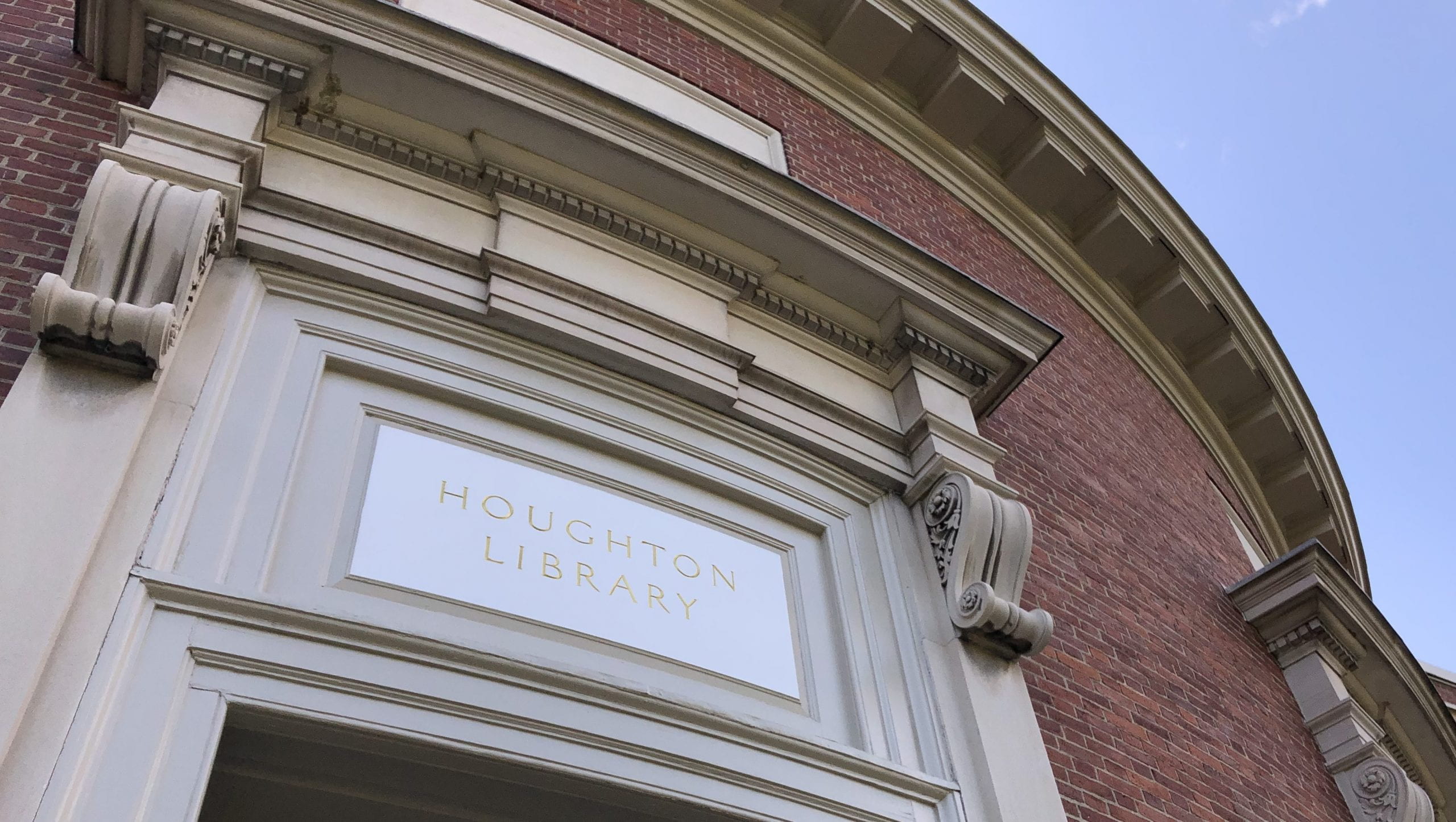As you’ve probably heard, a solar eclipse will be visible in the U.S. today from coast to coast. The PBS television program NOVA will air a special episode tonight including live footage of the eclipse, and talking about the history and scientific significance of solar eclipses. Back in April, a film crew visited Houghton in preparation for the episode to take a look at some historic eclipse images from the collection.
Edmond Halley is probably best remembered for his prediction of the return of the comet now named for him, but he made crucial contributions to the study of eclipses as well. In 1715, Halley published a map predicting the path of an eclipse passing over England with exceptional accuracy, a triumph for Newtonian physics.
Following the eclipse, Halley refined his map further and republished it, based on actual observations of the eclipse.
Because the path of totality passed directly over London, interest in the eclipse was widespread, and many such engravings were issued. Today, Houghton is fortunate to have one of the best collections in the world of publications from the eclipse of 1715, thanks largely to the efforts of historian Narcissus Luttrell, who seemingly scooped up every one he could find.
Astronomers like Halley and William Whiston encouraged the general public to make their own observations of the eclipse, and Whiston issued this worksheet to compile such observations.
Purchasers of The Eclipsometer could simulate the moon’s path across the disc of the sun by sliding a decorated paper disc. While this one has unfortunately been permanently fixed into place, you can get the 21st century version of the experience with the Harvard-Smithsonian Center for Astrophysics Eclipse 2017 app.
[This post was contributed by John Overholt, Curator of the Donald and Mary Hyde Collection of Dr. Samuel Johnson, and of Early Modern Books and Manuscripts.]





